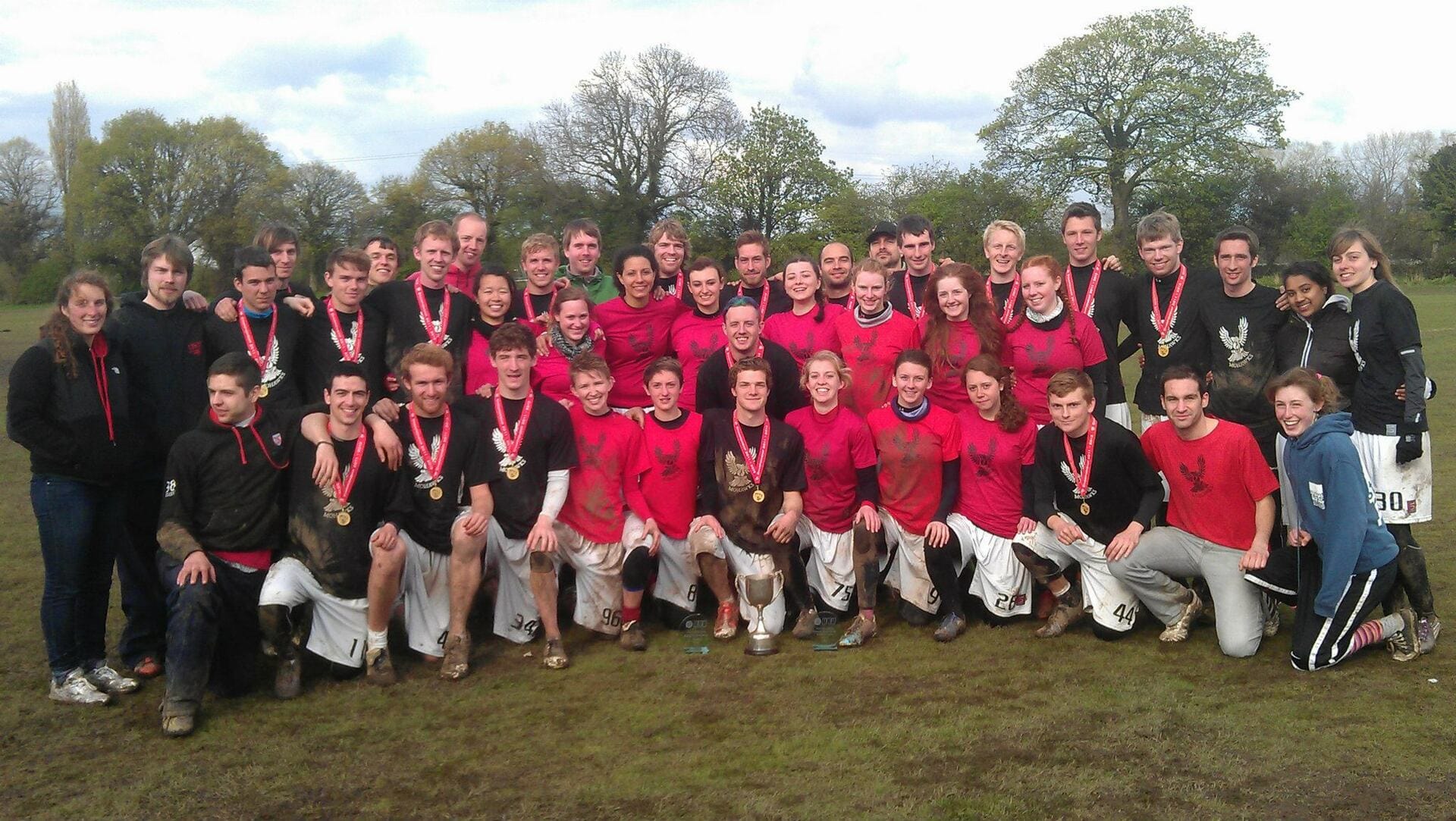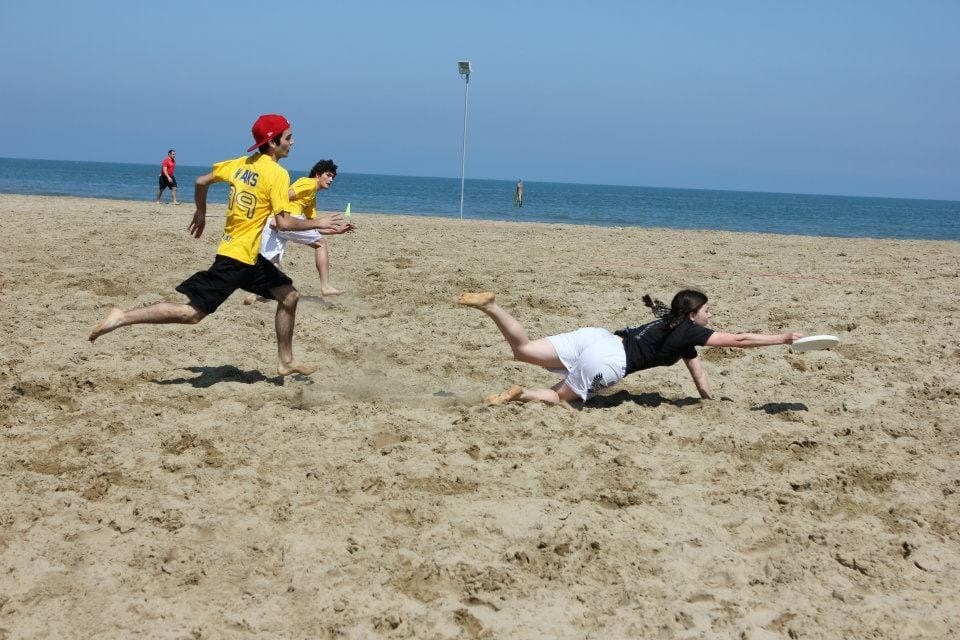What Makes a Monster? – Women in Mixed
Last post, my main point was that the men need to be able to throw and not hog the pitch (brief summary…). But what about the women? As a woman at mixed, I’ve sometimes felt like I’m fighting my own team – for the cutting lane, for the deep space, or even just to get them to throw me the disc when I’m free (in my head, I’m always free…). I’m not saying this is a universal experience – just one that I know is shared by quite a few women I’ve played with or against.
I think the players who end up feeling this frustration most keenly are the all-rounders: the women who can ‘do it all’, whether that’s chucking it at the endzone, breaking a mark to start play, winning their matchup in the cutting lane. It’s that feeling of ‘I can do everything, but I can’t do anything’. One reason why the all-rounder struggles is that it’s difficult for the men to remember exactly what she’s good at (“everything” is a tricky concept), which means that she accumulates less ‘trust points’ in any specific area.
Contrast this with the ‘specialist’. “She only runs deep”. “All she can do is break marks.” Often said with derision from the other team BUT within your own team, this helps – because the menfolk have seen you do the same good thing over and over again. They know you can do it, and they know it’s not a fluke. Trust points galore. If above all, you want to be a phenomenal female mixed player, consider specialisation. Pick the thing you’re best at and make sure the team know it. If you’re the all-rounder, you’ve got the joy of picking whatever you want to do most, but I would argue there are some things that are better to specialise in that others.
If you’re a handler, I strongly advise breaks as an area of specialisation. Case in point: Nicole from Brighton. She’s not our biggest lobber of the disc, but when it comes to the endzone, if we have a static disc mid-pitch, it will be Nicole picking it up (or it should be anyway!). She has near unblockable release points and I would bet on her rather than any force that is put on her. Again, breaks are handy in the women’s game, but in mixed they are a great way to hustle your way onto the disc, and give your team the benefit of a potentially less aggressive and mobile force than the male handlers will be facing.
Why not hucks? I hear you cry. Hucks are trickier to use effectively, from female handlers in particular. With breaks, you’re looking for roughly the same areas of the pitch as the male handler, so nobody needs to adjust their cutting style. With hucks, your upfield players need to be cutting for your huck distance, which is likely to be shorter than the male handlers. A key problem we’ve had at Brighton this season is the waste of having so many female players that can stick it but having our deep cuts constantly geared towards the Dougies and Sions of the team (the BIG guns). Our women look off the deep cuts, because they’re (for our throws) badly timed and too far away. The men conclude we can’t stick it and stop cutting deep. Having said that – that’s us sucking as a team. It can be done – if you want to see a team use a female hucker well, check out Brass Monkey’s lanes set from 2006 WUCC. They have a biiiiiig female handler (Lauren Casey, #33 if memory serves) and make sure that she can stick it at their big male receivers by setting up their lanes short, and having her always take bricked pulls – the short lanes mean she can easily get the disc into the space ahead of the receiver, and starting from the brick mark makes it easier for her to hit the endzone.
So yes, hucks on women = awesome, but they require the entire team to alter how they set up and cut to be effective. Breaks are a weapon on women without the team having to alter their set – it’s a chance for you to beat your mark one on one, without the rest of your team messing it up for you.
For upfield players, you’re gonna want to be a big threat deep. Bobbi is probably one of the best female receivers in mixed – and not for the reason you’re thinking. Yes, she’s outrageously quick, but that’s not why she’s so handy. What sets her apart, I think, is her read of the disc and her body positioning. Even if the disc is bad enough that a male poacher can get in there with her, she’ll still box him out, or just plain outread him. The number of times I’ve seen Bobbi standing with the disc in the endzone, curiously looking down at the guy sitting on the floor in front of her, is inappropriately high. If you want to be a deep receiver in mixed, don’t focus solely on sprints. Practice reading the disc and taking it at the peak of your jump, visualising defenders to box out. Practice ‘misreading’ the disc – pulling the male D in front of you for a bid he can’t make, and sneaking off to mop up behind him. You need the speed and agility to beat your own mark and get the disc thrown to you, sure, but sometimes, you’re going to have to be able to go up against the other team’s goons. And win.
Are there other skills that are useful at mixed? Undoubtedly. Is there stuff I’ve missed? Of course. These are just a few points that I think would dramatically help most mixed teams I’ve played on. I also think that we very infrequently talk about the challenges of mixed as a division, especially in the UK, where many people play both open/women’s and mixed and have to swap between them with often a very short adjustment period.





